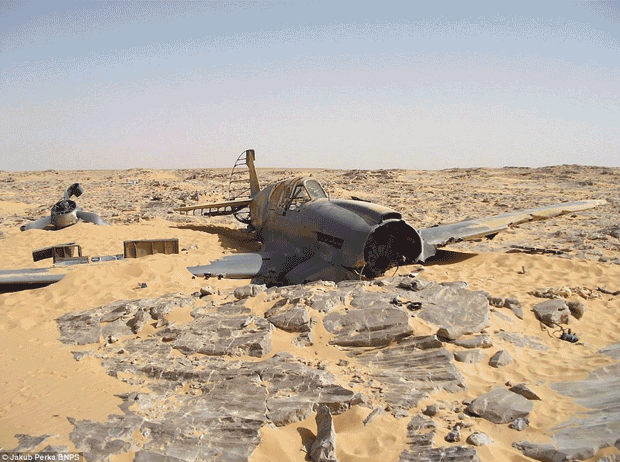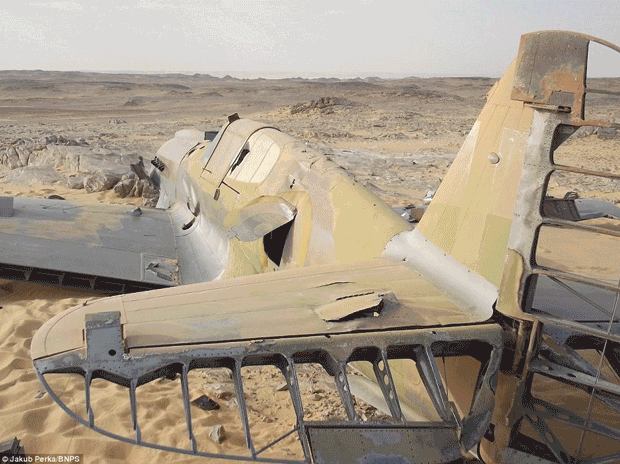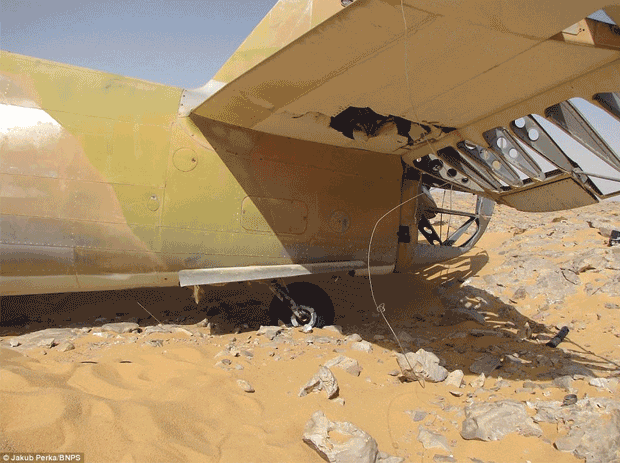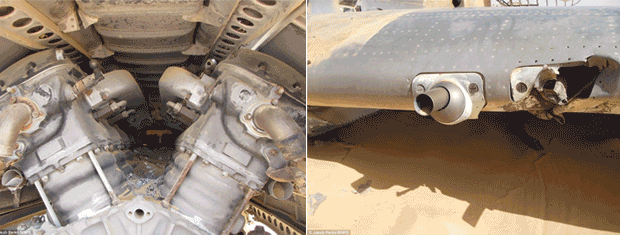|
He was hundreds of miles from civilisation, lost in
the burning heat of the desert.
Second World War Flight Sergeant Dennis Copping took what little he
could from the RAF Kittyhawk he had just crash-landed, then wandered
into the emptiness.
From that day in June 1942 the mystery of what happened to the dentist’s
son from Southend was lost, in every sense, in the sands of time.
|
|
 |
|
But 70 years later, the ghostly remains of his battered but almost
perfectly preserved plane has been discovered.
Like a time capsule that could provide the key to his disappearance, it
had lain intact alongside a makeshift shelter Dennis appears to have
made as he waited, hopelessly, for rescue.
Now a search is to begin for the airman’s remains – as aviation experts
and historians begin an operation to recover and display the P-40
aircraft in his memory.
The chance find was made by an oil worker exploring a remote region of
the Western Desert in Egypt. It is more than 200 miles from the nearest
town in a vast expanse of largely featureless terrain.
|
|

|
|
Flight Sergeant Copping, part of a fighter unit based in Egypt during
the North Africa campaign against Rommel, is believed to have lost his
bearings while flying the damaged Kittyhawk to another airbase for
repair. All that is known is that he went off course and was never seen
again.
Remarkably, the plane remained almost untouched for the next seven
decades – right down to the guns and ammunition found with it. Most of
the cockpit instruments are intact, and the twisted propeller lies a few
feet from the fuselage.
Crucially, the P-40’s identification plates are untouched – allowing
researchers to track its provenance and service history.
|
|

|
|
There is flak damage in the fuselage, which is consistent with documents
on the aircraft. Historian Andy Saunders said: ‘It is a quite incredible
time capsule. It’s the aviation equivalent of Tutankhamun’s tomb.
‘This plane has been lying in the same spot where it crashed 70 years
ago.
‘It hasn’t been hidden in the sand, it has just sat there.
‘He must have survived the crash because one photo shows a parachute
around the frame of the plane and my guess is the poor bloke used it to
shelter from the sun. The radio and batteries were out of the plane and
it looks like he tried to get it working.
|
|
 |
|
‘If he died at the side of the plane his remains would have been found.
Once he had crashed there, nobody was going to come and get him. It is
more likely he tried to walk out of the desert but ended up walking to
his death. It is too hideous to contemplate.’
The RAF Museum in Hendon, North London, has been made aware of the find
and plans are already under way to recover it before anyone tries to
strip it for scrap or souvenirs. Efforts have also been made to trace
any immediate members of Flight Sergeant Copping’s family in the UK, but
it is believed that none survives.
Captain Paul Collins, British defence attaché to Egypt, confirmed a
search would be mounted for the airman’s remains but admitted it was
‘extremely unlikely’ it would be successful. The spot could be marked as
a war grave after the aircraft is recovered.
|
|
 |
|
Captain Collins added: ‘The scene is close to a smuggling line from
Sudan and Libya.
‘We will need to go there with the Egyptian army because it is a
dangerous area.’
Ian Thirsk, of the RAF Museum, confirmed staff are working with the MoD
to recover the plane.
The P-40 was a US-made fighter and ground attack aircraft. It was
outclassed by later German fighters and saw little combat in Europe but
performed a key role in North Africa and Asia where high-altitude
performance was less critical. Around 20 are still airworthy.
|